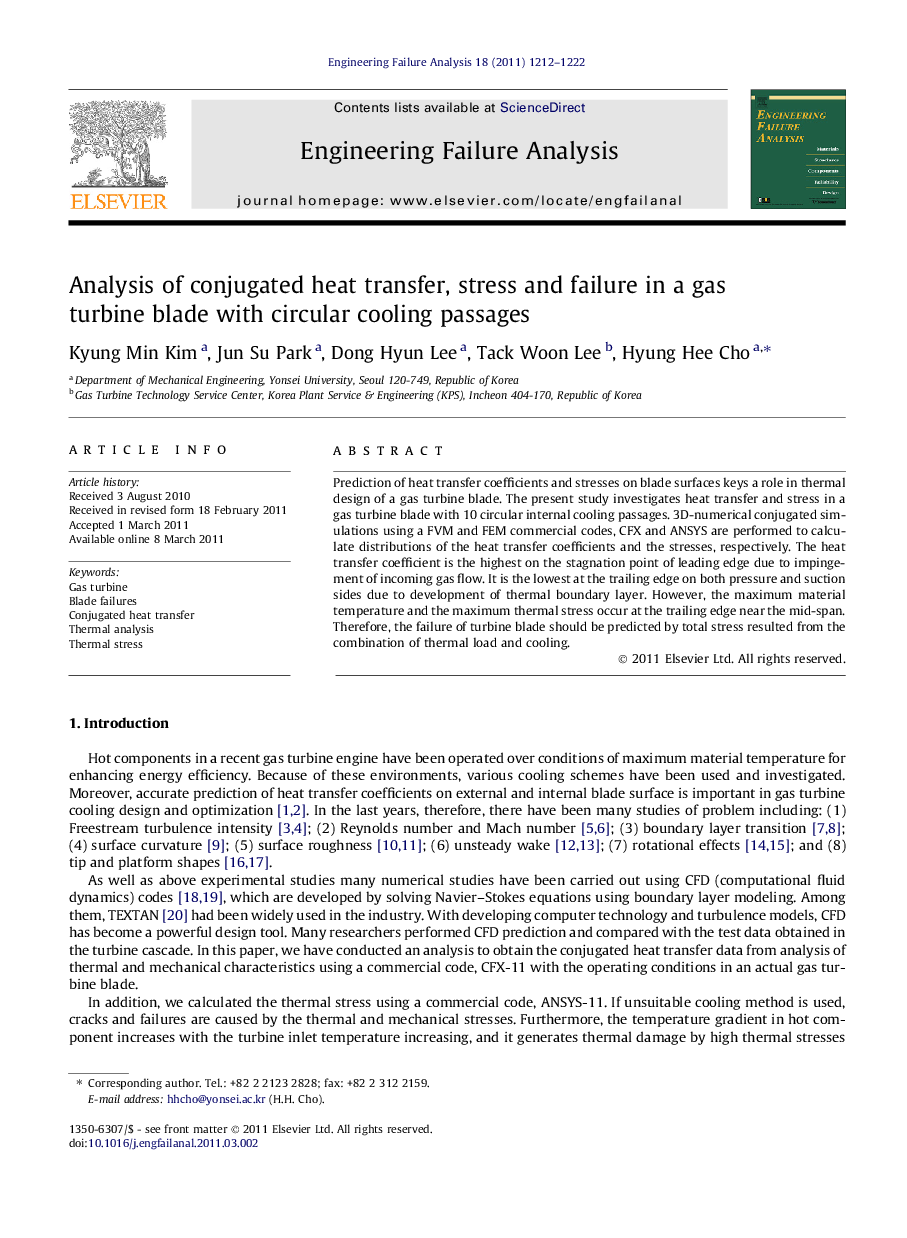| Article ID | Journal | Published Year | Pages | File Type |
|---|---|---|---|---|
| 768770 | Engineering Failure Analysis | 2011 | 11 Pages |
Prediction of heat transfer coefficients and stresses on blade surfaces keys a role in thermal design of a gas turbine blade. The present study investigates heat transfer and stress in a gas turbine blade with 10 circular internal cooling passages. 3D-numerical conjugated simulations using a FVM and FEM commercial codes, CFX and ANSYS are performed to calculate distributions of the heat transfer coefficients and the stresses, respectively. The heat transfer coefficient is the highest on the stagnation point of leading edge due to impingement of incoming gas flow. It is the lowest at the trailing edge on both pressure and suction sides due to development of thermal boundary layer. However, the maximum material temperature and the maximum thermal stress occur at the trailing edge near the mid-span. Therefore, the failure of turbine blade should be predicted by total stress resulted from the combination of thermal load and cooling.
